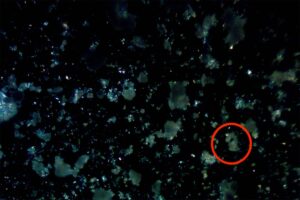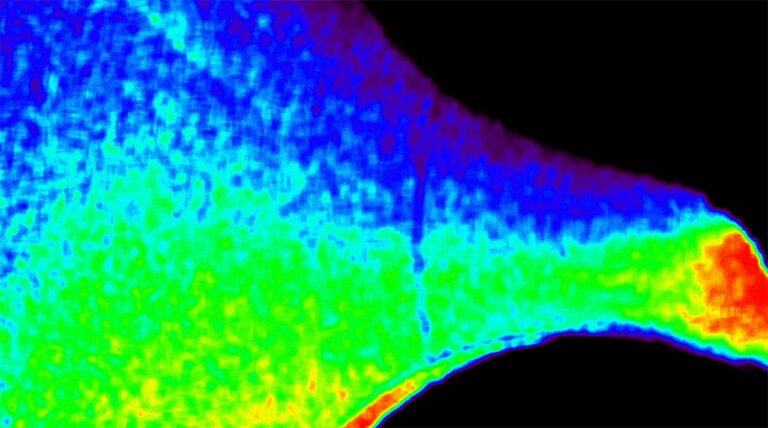Introduction
In the ever-evolving world of material science, certain discoveries defy expectations—and this one truly dazzles. Scientists have recently uncovered a rare class of crystals that do something extraordinary: they explode when exposed to light.
Yes, you read that right.
Unlike traditional crystals that shimmer and refract light, these photo-reactive crystals physically shatter or leap into motion when struck by a specific light wavelength, especially ultraviolet (UV) rays. While the term “explode” might sound dangerous, in this case, it refers to a controlled, microscopic reaction that could revolutionize how we design materials for real-world use.
From advanced sensors to microscopic machines, the potential applications of these “weird” crystals are limitless. So let’s dive into what they are, why they behave this way, and how they could shape the future of science and technology.
What Are These Light-Exploding Crystals?
These crystals belong to a unique category of photoactive molecular solids. The discovery centers around organic crystals—specifically, those made from molecules that undergo dramatic changes in shape and structure when hit by light.
Under the microscope, these changes aren’t subtle. The crystals either jump, split, or explode apart in response to UV light. This happens so rapidly that it often catches even seasoned researchers by surprise.
The technical term for this reaction is photomechanical actuation—a light-induced mechanical response that can be harnessed for controlled movement or energy release.
The Science Behind the Explosion
So how does it actually work?
At the molecular level, here’s what happens:
UV Light Activation: When UV light hits the crystal, it excites certain chemical bonds within the molecules.
Molecular Rearrangement: These excited bonds trigger a rearrangement of the molecular structure.
Stress Accumulation: As the molecules shift, internal mechanical stress builds up in the rigid crystal lattice.
Sudden Release: When this stress exceeds the strength of the crystal, the material breaks, jumps, or fractures—appearing to “explode.”
This is called a photoinduced phase transition, and it can occur in mere milliseconds.
One famous example is azobenzene derivatives, which can undergo shape changes when exposed to UV or visible light. These compounds are often used in light-responsive materials because of their fast and reversible behavior.
Real-World Applications: From Sci-Fi to Reality
While it might seem like a party trick for the science lab, this discovery has huge real-world implications. Here are some ways scientists and engineers are planning to use these light-exploding crystals:
1. Micro-Actuators in Medical Devices
These crystals could serve as miniature motors or switches in biomedical equipment. Imagine a pill-sized robot that can perform internal surgery, powered only by light—no batteries, no wires.
2. Light-Triggered Sensors
Their extreme sensitivity makes them perfect for developing ultra-precise sensors. These sensors could be used in defense systems, space technology, or high-security environments where automatic reaction to light is crucial.
3. Propulsion Systems
Some researchers are exploring using these crystals for light-propelled movement—ideal for tiny satellites or space probes that could be nudged into motion using light alone. This could be a game-changer for low-energy space exploration.
4. Smart Textiles and Materials
Imagine clothing that changes shape, texture, or tightness based on light exposure. These crystals could lead to adaptive fabrics that adjust for comfort, temperature, or aesthetics automatically in sunlight.
5. Energy Storage and Conversion
Their ability to store mechanical energy and release it rapidly could help design novel energy conversion systems. Think of smart materials that store solar energy and release it in controlled bursts.
The Future of Light-Reactive Materials
The field of photomechanical crystals is still young, but the momentum is building. Researchers across the globe are now racing to identify more stable, cost-effective versions of these crystals that can be used in commercial products.
Challenges remain—such as the need for durability, safety, and mass production—but the possibilities are incredibly promising.
As we move toward a future shaped by nanotechnology, wearable devices, and responsive environments, materials like these will be crucial. The ability to harness light not just for visibility but also for mechanical energy could unlock new horizons in how we interact with our surroundings.
Final Thoughts
These “weird” crystals that explode in light are more than just a scientific curiosity—they’re a symbol of how nature and technology can blend in unexpected ways. What was once just a theoretical reaction in a lab has become a stepping stone toward **a more dynamic, responsive world

















+ There are no comments
Add yours